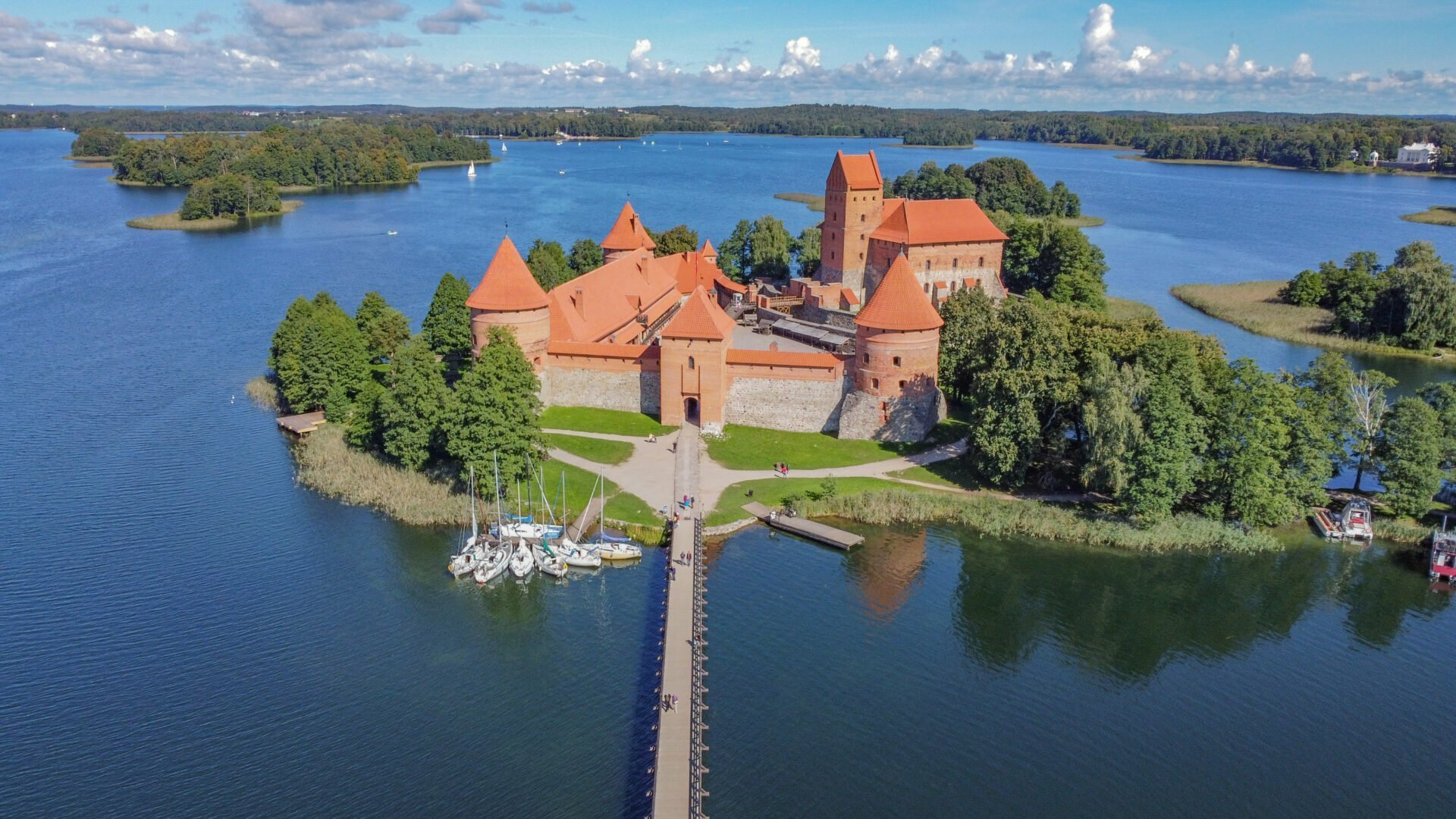Trakai Island Castle is probably the most famous castle in Lithuania. Shrouded in legends, celebrated by poets, depicted many times on canvases and in photographs, it is one of the most striking symbols of Lithuania.
 Since 1962, it has housed the Trakai History Museum. Here you can stroll through the halls of the ancient castle and see the exhibitions: collections of pipes, clocks, furniture, porcelain, glass and boneware, coins, medals, ancient maps, hunting trophies, jewellery, household utensils, knights’ armour and weapons, and precious paintings. In total, the Museum’s collections contain almost 400,000 exhibits. The castle also hosts exhibitions, educational events, concerts, festivals and celebrations.
Since 1962, it has housed the Trakai History Museum. Here you can stroll through the halls of the ancient castle and see the exhibitions: collections of pipes, clocks, furniture, porcelain, glass and boneware, coins, medals, ancient maps, hunting trophies, jewellery, household utensils, knights’ armour and weapons, and precious paintings. In total, the Museum’s collections contain almost 400,000 exhibits. The castle also hosts exhibitions, educational events, concerts, festivals and celebrations.
 Every year, Trakai Island Castle hosts traditional events, such as the Old Crafts Days in August, which attract a large number of participants and spectators, and the Vytautas the Great Festival, which takes place on 27 October, the day of Vytautas’ death, when visitors are welcome to participate in historical evenings in honour of the Grand Duke.
Every year, Trakai Island Castle hosts traditional events, such as the Old Crafts Days in August, which attract a large number of participants and spectators, and the Vytautas the Great Festival, which takes place on 27 October, the day of Vytautas’ death, when visitors are welcome to participate in historical evenings in honour of the Grand Duke.
Trakai is a historic Lithuanian town, just 28 kilometres west of Vilnius, surrounded by lakes. Construction of the Gothic castle on an island in Lake Galvė was begun in the 14th century by Grand Duke Kęstutis of Lithuania and completed in the first half of the 15th century by his son Vytautas. In 1409, Vytautas the Great moved the national capital to the castle, where the Metric of Lithuania and the State Treasury were kept. After the Battle of Žalgiris in 1410, after the defeat of the Teutonic Knights, Trakai Island Castle became the Grand Duke’s residence, a cultural centre of attraction, and Trakai became a thriving city with a large number of merchants, distinguished guests, and foreign envoys who visited the castle’s ceremonial hall. It was in this castle that Grand Duke Vytautas died on 27 October 1430.
Until the 16th century, all the princes of the Grand Duchy of Lithuania lived in the castle on Trakai Island. Only Sigismund Augustus broke this tradition by building a palace in Vilnius, at the foot of Gediminas Hill. After the loss of its military significance and its role as a residence in the 16th century, the significance of the Trakai Island Castle declined, and the Grand Dukes visited it less and less frequently. The Lithuanian Yearbook, which was kept in the castle, was moved to Vilnius in 1511. The island castle became a prison for convicted persons of noble background.
 During the invasion of Tsarist Russia in the 17th century, the town of Trakai was sacked and burnt, and the castle was destroyed. The city never regained its former importance, and the island castle stood abandoned and crumbling until the 20th century, when, after decades of restoration, it was finally repaired and restored to its 15th century appearance.
During the invasion of Tsarist Russia in the 17th century, the town of Trakai was sacked and burnt, and the castle was destroyed. The city never regained its former importance, and the island castle stood abandoned and crumbling until the 20th century, when, after decades of restoration, it was finally repaired and restored to its 15th century appearance.
This article is a part of a project implemented within the framework of the Innovation of Tourism Services and Products Program, with funding from the Agency for Science, Innovation and Technology, and from funds allocated by the Ministry of Economy and Innovation of the Republic of Lithuania.


